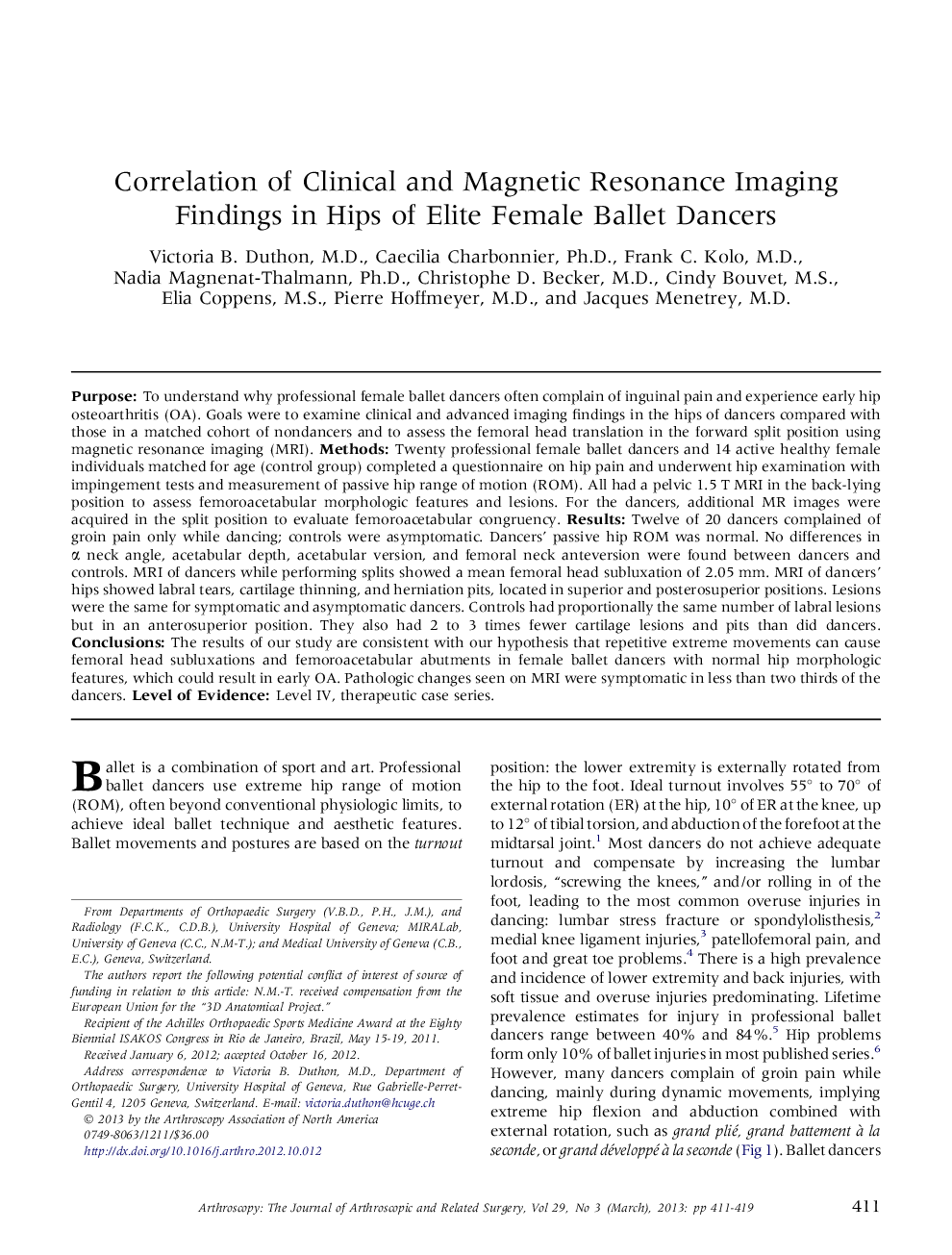| Article ID | Journal | Published Year | Pages | File Type |
|---|---|---|---|---|
| 4044066 | Arthroscopy: The Journal of Arthroscopic & Related Surgery | 2013 | 9 Pages |
PurposeTo understand why professional female ballet dancers often complain of inguinal pain and experience early hip osteoarthritis (OA). Goals were to examine clinical and advanced imaging findings in the hips of dancers compared with those in a matched cohort of nondancers and to assess the femoral head translation in the forward split position using magnetic resonance imaging (MRI).MethodsTwenty professional female ballet dancers and 14 active healthy female individuals matched for age (control group) completed a questionnaire on hip pain and underwent hip examination with impingement tests and measurement of passive hip range of motion (ROM). All had a pelvic 1.5 T MRI in the back-lying position to assess femoroacetabular morphologic features and lesions. For the dancers, additional MR images were acquired in the split position to evaluate femoroacetabular congruency.ResultsTwelve of 20 dancers complained of groin pain only while dancing; controls were asymptomatic. Dancers' passive hip ROM was normal. No differences in α neck angle, acetabular depth, acetabular version, and femoral neck anteversion were found between dancers and controls. MRI of dancers while performing splits showed a mean femoral head subluxation of 2.05 mm. MRI of dancers' hips showed labral tears, cartilage thinning, and herniation pits, located in superior and posterosuperior positions. Lesions were the same for symptomatic and asymptomatic dancers. Controls had proportionally the same number of labral lesions but in an anterosuperior position. They also had 2 to 3 times fewer cartilage lesions and pits than did dancers.ConclusionsThe results of our study are consistent with our hypothesis that repetitive extreme movements can cause femoral head subluxations and femoroacetabular abutments in female ballet dancers with normal hip morphologic features, which could result in early OA. Pathologic changes seen on MRI were symptomatic in less than two thirds of the dancers.Level of EvidenceLevel IV, therapeutic case series.
